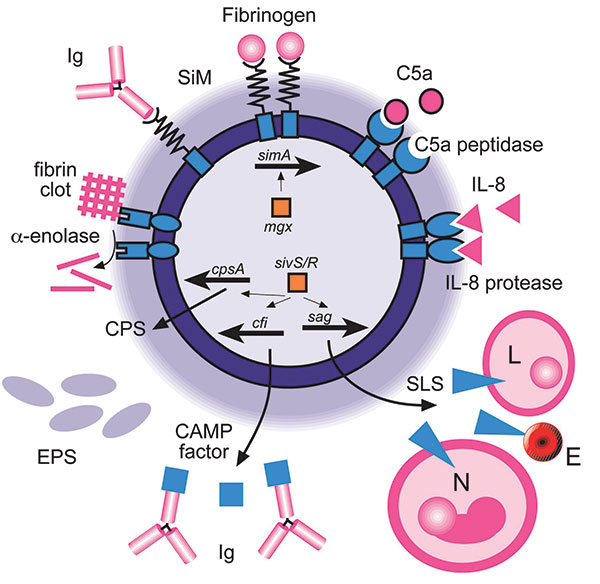Volume 15, Number 12—December 2009
Synopsis
Towards Control of Streptococcus iniae
Figure

Figure. Virulence factors of Streptococcus iniae. A diagrammatic representation of a cell of S. iniae showing the regulatory genes involved in virulence factor expression (inside cell) and the virulence factors on the outside of the cell. In a clockwise direction, SiM protein (simA) expression is likely to be regulated by mgx. SiM protein binds immunoglobulin (Ig) and fibrinogen. C5a peptidase and interleukin-8 (IL-8) protease degrade their respective chemokines to impair phagocyte signaling. Production of the cytolysin streptolysin S (sag; SLS) is regulated by the sivS/R system. SLS lyses lymphocytes (L), erythrocytes (E), and neutrophils (N). The CAMP factor gene, cfi, is also regulated by sivS/R and is known to bind immunoglobulin by the Fc region. Capsular polysaccharide (cpsA; CPS) synthesis is controlled by sivS/R and is represented by a haze around the cell. Exopolysaccharide (EPS) is produced in excess and contributes to highly viscous growth. α–enolase degrades fibrin clots and promotes dissemination.